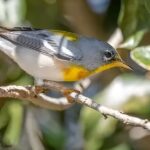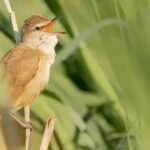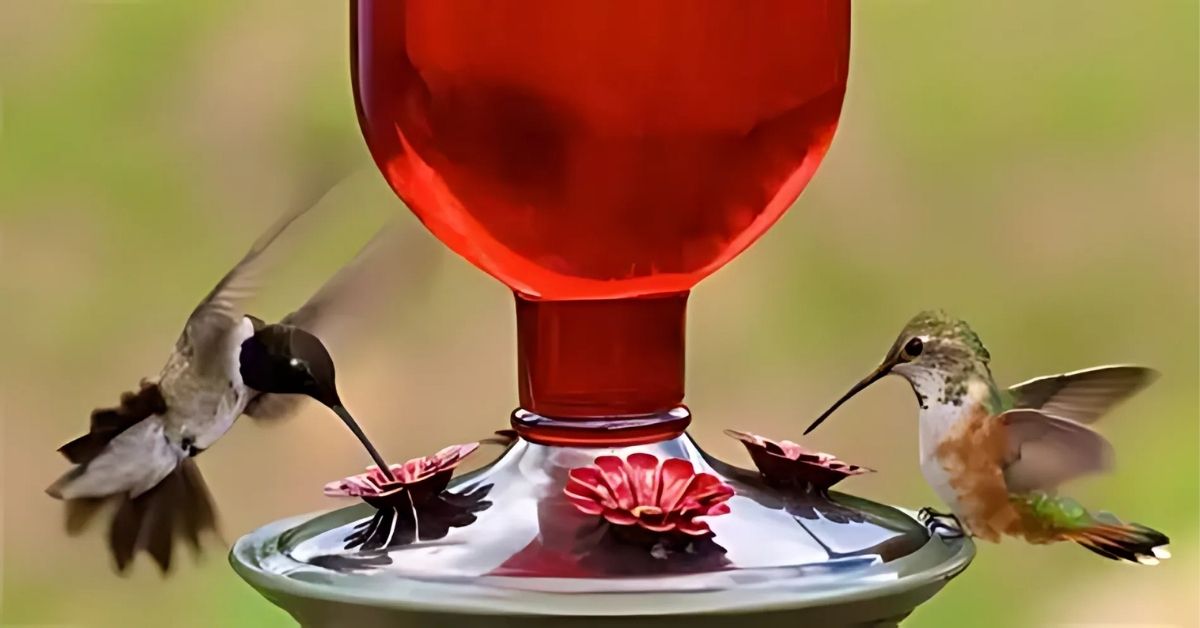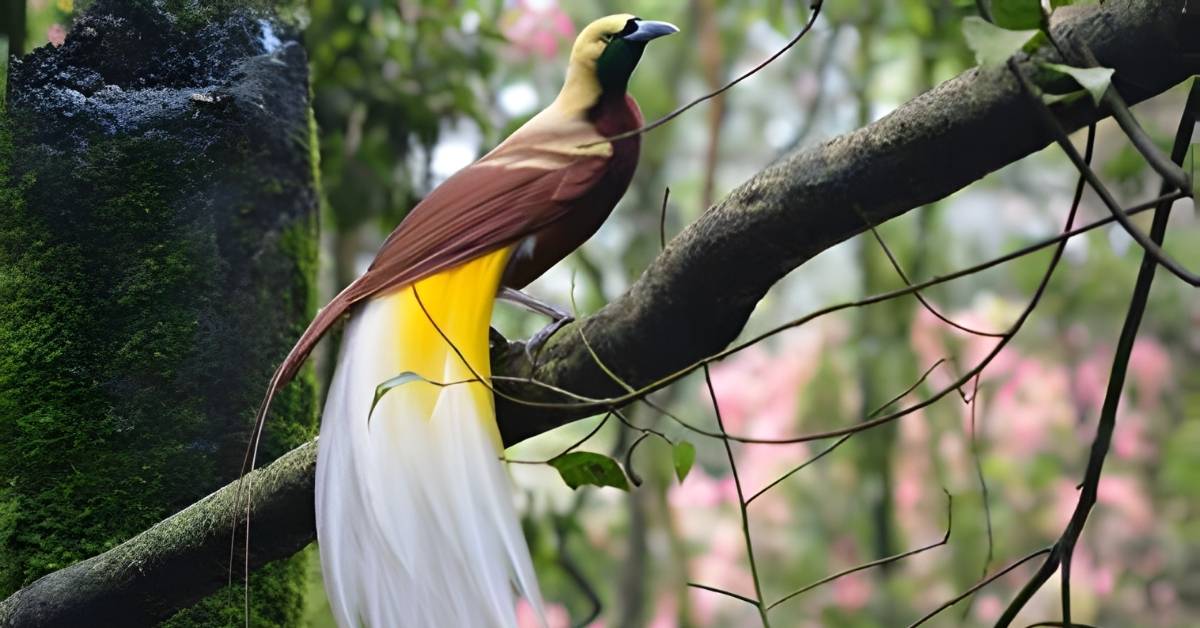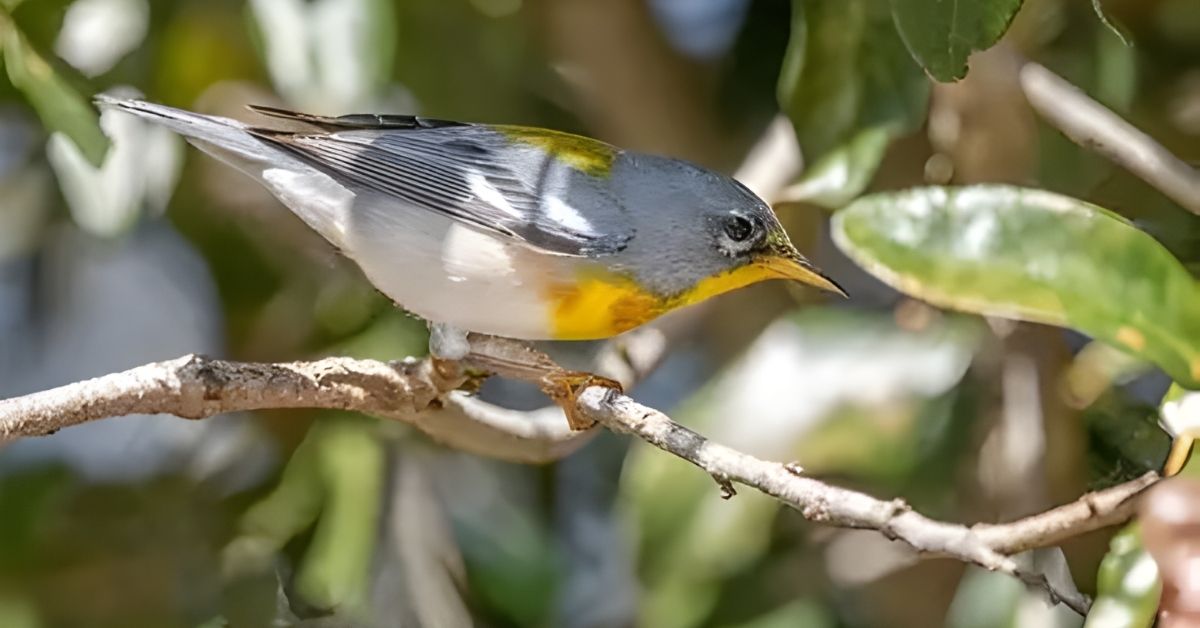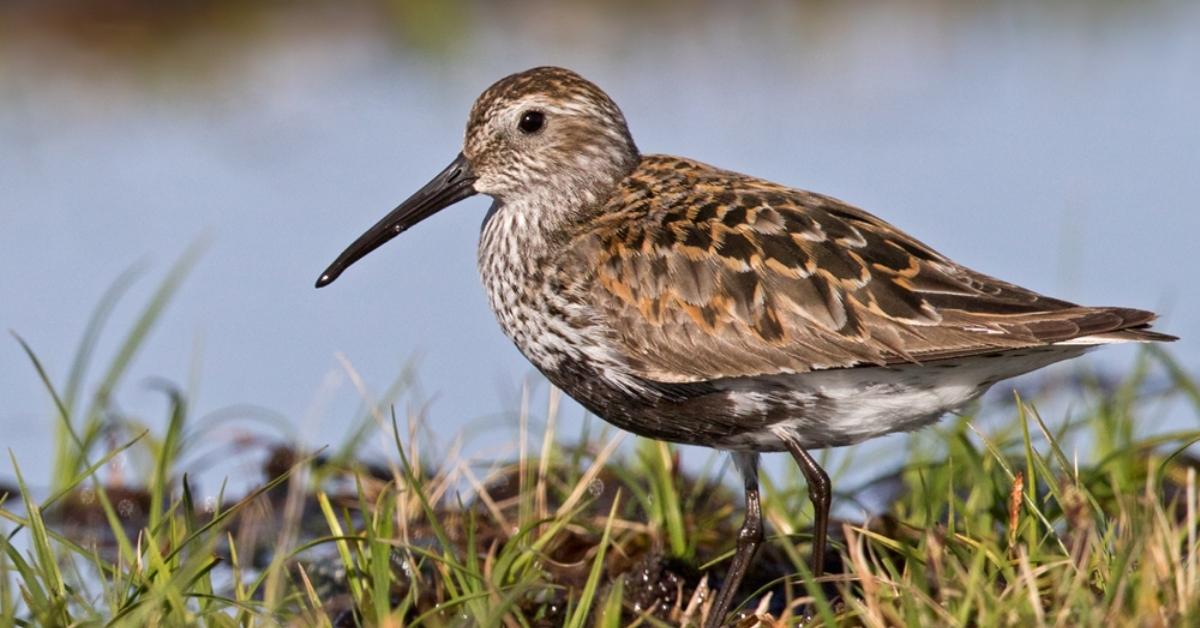If you love watching hummingbirds in your yard, you’ve likely wondered how to keep ants away from hummingbird feeders. Ants can quickly take over a feeder, following sugar trails to the nectar and leaving behind sticky messes. Knowing how to keep ants away from hummingbird feeders helps you protect these tiny birds while keeping your feeder clean and inviting.
The good news is that there are many simple tricks for stopping ants. Whether you move the feeder, add an ant moat, or use a fishing line, learning how to keep ants away from hummingbird feeders makes birdwatching more enjoyable every day.
Keep the Feeder Clean
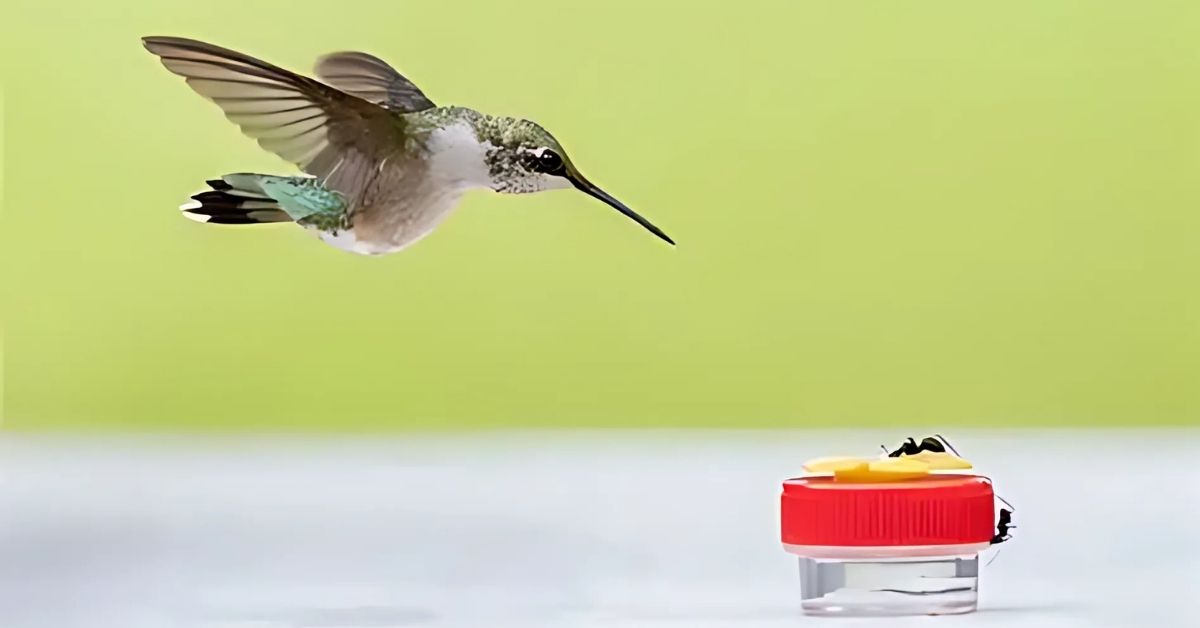
If you want to stop ants from taking over your hummingbird feeders, the first step is to keep everything spotless. Nectar made of sugar and water may look harmless, but even the smallest residue, leaks, or drips left on the outside of the feeding ports will call ants instantly. Once they find that sweet source, they leave behind a scent that other ants can learn and follow repeatedly, making the feeder even more attractive to them. By washing on a schedule every few days, you can break this cycle. A good practice is to wash with warm water and a little mild soap or vinegar, then wipe it completely dry before you refill it.
You should also inspect your feeder regularly to fix any cracks or leaks that keep spilling nectar. Even a tiny crack can create a sticky mess that encourages pests. Once cleaned and dried, a feeder will stay safer for your birds and harder for ants to invade. Consistency here matters more than anything else; a clean feeder not only prevents insects but also protects hummingbirds from bacteria and mold.
Relocate the Feeder Frequently
Ants are creatures of habit. When they find food, they mark trails with their scent and return to that place over and over. By moving your feeder occasionally, you disrupt these trails and force ants to search again. It doesn’t need to be a huge move. Even shifting it a few feet or changing the location to a different branch or hanger can throw them off balance. This small step can discourage pests without confusing the hummingbirds, who quickly adjust to new spots.
Choosing the right placement helps too. Avoid hanging feeders right next to trees, branches, or walls that give ants easy access. Instead, hang it where pathways are difficult to cross, such as an open yard or above a pond. In addition, setting the feeder in shade can protect it from extreme temperature changes that cause expansion and leaks. If you switch up the hanging spot now and then, you’ll notice fewer ant invasions and a healthier group of hummingbirds visiting.
Use Fishing Line to Hang the Feeder
One clever trick many bird lovers swear by is hanging the feeder with a fishing line. This thin line creates a smooth and slippery surface that ants can’t easily climb. Because the suspension has little for them to grip, ants find it almost impossible to cross. Just make sure the line you use is strong enough to hold the feeder when it’s filled with nectar and water.
If you want to add an extra barrier, you can carefully apply a bit of petroleum jelly on the hanger or pole above the line. That way, even if ants start crawling up, the sticky layer makes them slide back down. Just remember not to put this material anywhere near the ports or nectar, since it must remain safe for the birds. While you may need to reapply the jelly if it gets washed away or wears off, this small adjustment keeps the feeder free from unwelcome insects.
Install an Ant Moat
An ant moat works like a tiny fortress. It’s a small cup-shaped barrier that holds water right above the feeder. Ants try to walk down, but when they reach the moat, they can’t swim across and fall back. Because the moat is simple but effective, it’s one of the most popular choices for people dealing with serious infestations. You can buy a ready-made moat or even build your own with a cup and wire.
To keep the moat useful, you’ll need to watch for evaporation during heat waves. Add a drop of cooking oil to slow down the drying process, and always keep it topped with fresh water. When it stays filled, it forms an unbroken shield that ants can’t pass. Compared with grease or other sticky barriers, an ant moat doesn’t create a mess and doesn’t risk the birds touching unsafe substances. That makes it one of the cleanest and most reliable fixes.
Also Read This: Lovebirds vs Parakeets
Try Placing Mint Near the Feeder
Nature itself offers simple repellents against ants. Scents like peppermint, garden mint, citrus peels, and cinnamon act as strong deterrents. Ants dislike these smells and will avoid walking near them. You can use this by planting mint around your yard or tucking fresh leaves close to the feeder. Some people even sprinkle a bit of diatomaceous earth near the pole for extra defense, though you need to be careful so birds don’t come in direct contact.
If you prefer sprays, you can mix water with lemon juice and apply it to the hanger. These natural sprays give off a strong smell ants can’t stand, but the effect doesn’t last forever. You’ll need reapplication, especially after rain or watering plants. Still, this method is safe for birds if you use it correctly. Just avoid essential oils that are too concentrated because they can overwhelm hummingbirds at the feeder. By experimenting with safe natural tools, you make the area less inviting for pests without hurting your guests.
Keep Your Feeder in Good Repair
A well-maintained feeder always performs better. Over time, feeders can develop cracks, loose parts, or broken seals. These flaws lead to leaks, and each drip of nectar becomes a magnet for ants. To avoid this, you should seal or repair any cracked parts and check for damage after storms. Pay attention to the way the feeder reacts to changes in shade and thermal expansion since heat can warp plastic and cause problems.
Making quick repairs keeps nectar from spilling and reduces the chance of mold too. If you find that your feeder is too worn, it may be time to upgrade. Modern designs often include built-in ant moats or covered ports that are less prone to leaks. By choosing the right feeder type, you get better durability, easier cleaning, and stronger performance. Look at customer reviews before buying so you pick one that works well in your climate. Once kept in good shape, a feeder will serve your hummingbirds faithfully without inviting pests.
Hang the Feeder Over Water
Water itself can be your greatest ally in this battle. If you hang the feeder directly over a pond, birdbath, or backyard fountain, the ants can’t reach it. The barrier below makes their path impossible, while hummingbirds easily fly in and out. In addition, a water source nearby helps the birds stay hydrated, giving them more reasons to visit your yard.
The trick here is to find the right balance in height and placement. If the feeder is too low, other animals might try to reach it, but if it’s too high, it can be hard for you to refill and clean. By combining water placement with regular maintenance, you create a double benefit: fewer ants and happier birds. This method works especially well in warm states where ponds and fountains are common in gardens.
Purple Martins and Their Human Landlords
While hummingbirds take center stage, it’s worth remembering other species that benefit from human help, like Purple Martins. These birds often depend on their “human landlords” who provide them with specially built houses. The arrangement has become a tradition in many parts of the country, with people setting up housing colonies every spring.
Just as martins rely on safe nesting spaces, hummingbirds depend on clean feeders free from pests. Supporting both kinds of birds shows how small efforts in our yards ripple through nature. When you keep your feeder ant-free, you’re joining a larger community of bird lovers across the USA who actively protect wildlife in their backyards.
An update on human Bird Flu cases in the US
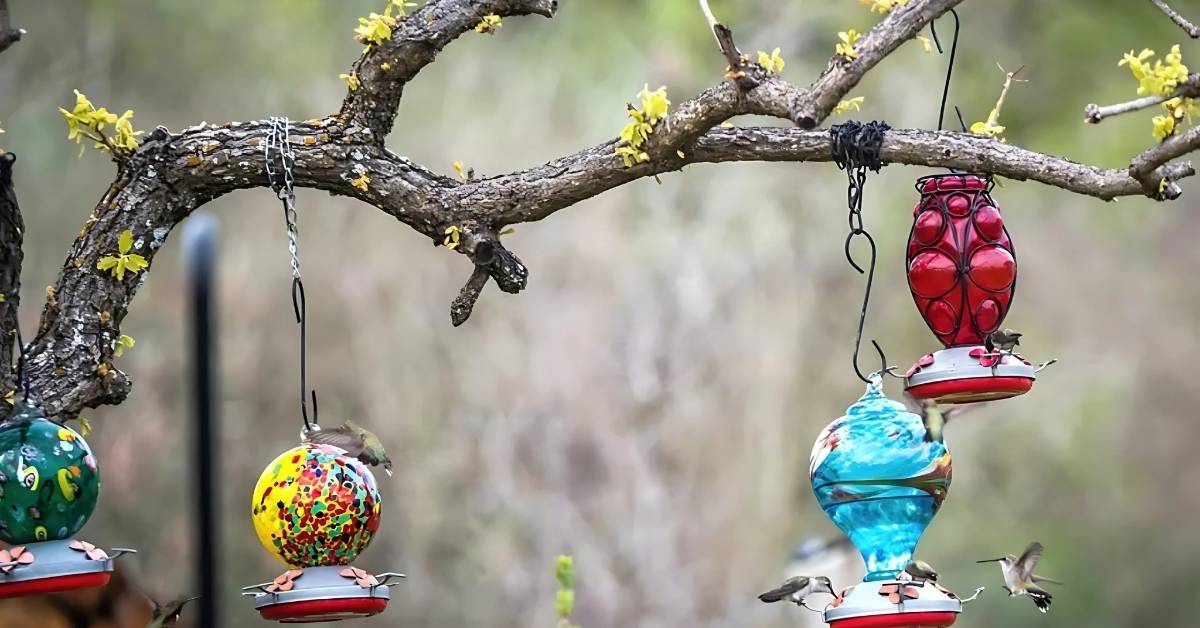
Health concerns sometimes make people wonder if bird feeders could spread illnesses. In recent years, human Bird Flu cases in the US have been closely watched. Experts, including the report that the risk from backyard feeders is very low if you keep them clean. Problems usually come from large-scale poultry farms, not from small nectar feeders for hummingbirds.
Still, the same good habits that keep ants away also keep you safe. When you clean and handle your feeder, wash your hands afterward. If you notice sick or dead wild birds nearby, contact local wildlife services rather than ignoring the signs. Staying informed and practicing hygiene ensures both your birds and your family remain safe.
Hummingbird Highways- Migration Begins
Every year, hummingbirds travel thousands of miles across what many call the “hummingbird highways.” These pathways stretch through the United States as the birds move north in spring and south in fall. During migration, nectar feeders become a crucial fuel stop. By keeping feeders clean, leak-free, and free from ants, you make your backyard an important station along this long route.
Migration also offers bird watchers a special chance to see many species passing through. If you live in states along the Gulf Coast or in the Midwest, you may see heavy traffic at certain times. Setting up reliable feeders not only helps the birds survive but also rewards you with the joy of witnessing their journey up close. When you think about it, protecting a feeder from ants is more than just a small task, it’s a way of supporting an epic adventure across the continent.
FAQs
What is the best ant deterrent for hummingbird feeders?
The best deterrent is an ant moat filled with water. Ants can’t cross it, and it keeps the feeder safe.
How do you keep ants out of your bird feeder?
Keep the feeder clean, fix leaks, hang it with a fishing line, or move it often. Adding an ant moat works well too.
How do you make an ant guard for a hummingbird feeder?
Use a small cup above the feeder, fill it with water, and hang the feeder below. This DIY guard stops ants from climbing down.
Conclusion
Learning how to keep ants away from hummingbird feeders is not hard. Small changes make a big difference. Keep the feeder clean. Move it when needed. Use a fishing line or add an ant moat. These tricks stop sugar trails, drips, and leaks that ants love. When you know how to keep ants away from hummingbird feeders, you protect the birds and enjoy more visits in your yard.
It’s smart to check your feeders every few days. Look for cracks or residue. Place them in safe spots with shade and water nearby. Remember, how to keep ants away from hummingbird feeders means clean nectar, happy hummingbirds, and fewer pests around your garden.

Spiritual Vora shares deep insights on dreams, angel numbers, spiritual meanings, and inner healing. Our mission is to guide souls toward clarity, growth, and divine connection through uplifting and enlightening content.



